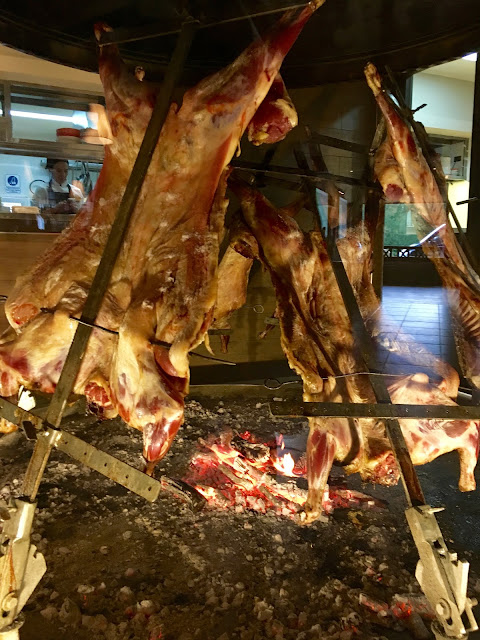Bife de lomo or tenderloin is generally the priciest and most tender cut although I've been told different restaurants translate it differently. We tried it our first night in Iguazu Falls in Aqua, where it was actually called filet mignon on the menu; in Buenos Aires at a parilla (grill), they called it bife de lomo - both were tasty and tender; huge too, big enough for two of us. We have also tried the rib steak - it too was very tender with higher fat content.
There were parillas and asados - parilla is where the meat was grilled and asado is like a barbeque where the whole side was cooked over an open fire. I tried cordero (lamb), where they give you different cuts on the same order - it was tender and flavorful. The short ribs asado was not as tender but still flavorful. There were various cuts and organ parts of the beef in the asado but dinner is usually so late, one can only eat so much. After gorging ourselves on meat for a few meals, we switched to seafood, which I will talk about in the next post.
 |
| Aqua called it "filet mignon" possibly because it's considered a fine dining restaurant but it looked the same as the Bife de lomo below from the Buenos Aires Grill in Recoleta. May be too big, really for filet mignon, but certainly tenderloin. |

 |
| And this is rib eye steak - with an egg on top! (homestyle cooking at Esquina Varela Restaurant, El Calafate) |
 |
| Short rib asado - I think I was too keen on my lamb asado, forgot to take a picture of it! |
 |
| All asado restaurants have this for show either outside or inside the restaurant. This one was in La Tablita, El Calafate. Locals came here too and the place was packed on a week night at 10pm |
 |
| And of course we had a most delicious beef sandwich (also big enough to share) at this roadside place "El Titanic de Homero" in Puerto Madero, Buenos Aires |


